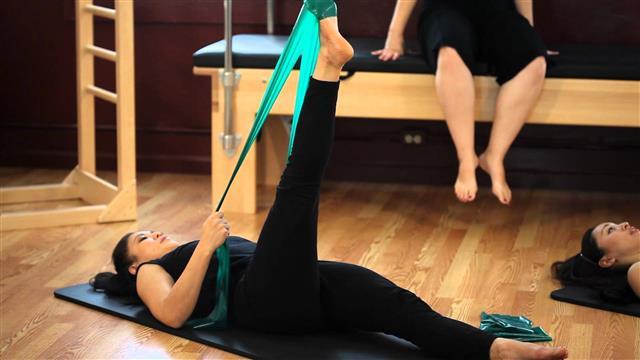It is very important to show caution when returning to exercise following the birth of your baby. Hormones are a factor in making your joints loose and muscles can be impaired from the trauma on your body following birth.
Three components that can be damaged during and after pregnancy are:
Abdominal changes, joint laxities (hormonal) and decreased pelvic floor function.
The Pelvic Floor is a broad sling of tissues spreading from the pelvic bone at the front of your body to the spine at the back. During pregnancy these muscles can become overstretched and weak (regardless of having a ‘c’ section or natural birth). This can cause stress incontinence.
The best time to start Pelvic Floor strengthening is straight away: Try lying on your back and practice breathing. Squeeze your pelvic floor muscles (as though you are trying to stop the flow when on the toilet). Continue to breathe in and out while holding the contraction. Progress to holding the contraction for longer with more breaths.
The muscle layers of the abdomen include:
-Rectus Abdominis
-External Oblique
-Internal Oblique
-Transverse Abdominis
The Rectus Abdominis (the “six-pack” muscle) runs vertically from the sternum to the pubic bone and its primary job is flexion (sitting up) particularly from a lying position. During pregnancy, the narrow band of tissue that runs down the body’s midline between the rectus abdominis becomes thinner due to hormones and the pressure of the expanding uterus.
The External and Internal Oblique muscles have fibers that run in a diagonal direction where together they form an “X” across your torso. Functionally they enable you to side bend and rotate.
The Transverse Abdominis is the deepest muscle in the abdominal wall and is the most important in exercise following pregnancy, as it is the body’s most important core stabilizer. It’s fibers draw the belly inwards and compresses the abdomen (acts like a corset). After pregnancy, activation of the transverse abdominis helps to close abdominal separation from the inside. To switch on the transverse abdominis – lie on your back and draw the muscles below your belly button in slightly towards the bed – if your stomach above the belly button moves you have done too much – practice holding the muscle on while breathing in and out.
Abdominal separation is fairly common during the latter stages of pregnancy and directly after giving birth as it causes the left and right sides of the rectus abdominis to separate.
Returning to Exercise – Learning how to control the muscles that control the shape of your abdominal wall and then maintain this posture and positioning during exercise is the most important step. Core stability (focusing on the transverse abdominis and pelvic floor) promotes healthy spine and muscle function, which enables you to eliminate unwanted movement during exercise.
A Real Time Ultrasound can assist you in learning how to switch these muscles on – speak to your physio about this.
Walking is a very gentle form of exercise that helps promote blood flow and healing. This is a safe and easy way to re-introduce exercise especially as you can take your baby with you by pushing a stroller. It is important to consult with your doctor before resuming exercise (as timeframes can vary depending on if you had a caesarian or given birth naturally).
